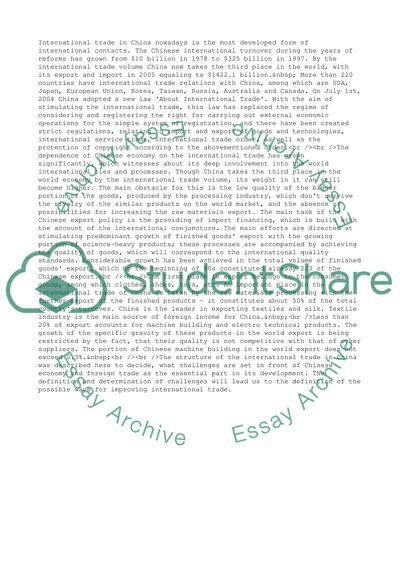Cite this document
(Improving China's International Trade Essay Example | Topics and Well Written Essays - 2000 words, n.d.)
Improving China's International Trade Essay Example | Topics and Well Written Essays - 2000 words. https://studentshare.org/business/1532784-how-to-improve-chinas-international-trade
Improving China's International Trade Essay Example | Topics and Well Written Essays - 2000 words. https://studentshare.org/business/1532784-how-to-improve-chinas-international-trade
(Improving China'S International Trade Essay Example | Topics and Well Written Essays - 2000 Words)
Improving China'S International Trade Essay Example | Topics and Well Written Essays - 2000 Words. https://studentshare.org/business/1532784-how-to-improve-chinas-international-trade.
Improving China'S International Trade Essay Example | Topics and Well Written Essays - 2000 Words. https://studentshare.org/business/1532784-how-to-improve-chinas-international-trade.
“Improving China'S International Trade Essay Example | Topics and Well Written Essays - 2000 Words”. https://studentshare.org/business/1532784-how-to-improve-chinas-international-trade.


